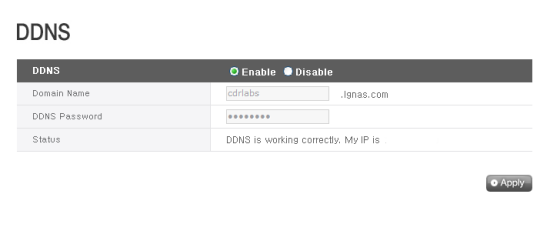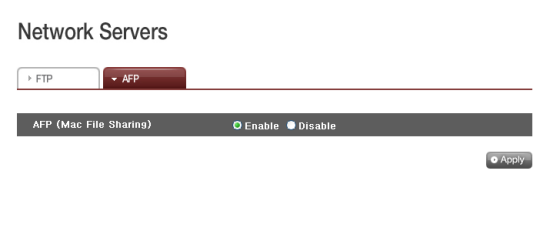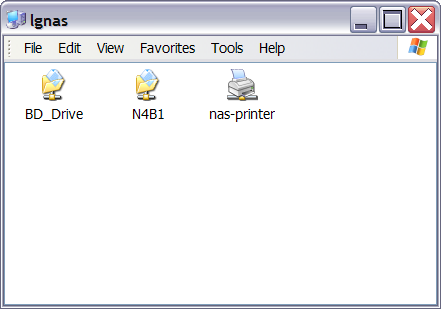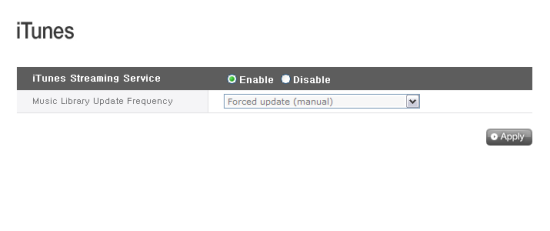The N4B1 offers support for a number of services, including Dynamic DNS, FTP and AFP servers, network printing and iTunes music streaming.
Dynamic DNS:
Using Dynamic DNS (DDNS), you can connect to the LG N4B1 by its domain name in environments where the IP may change over time. The service monitors the IP address and maps it to a domain name in real time.

Instead of using a well known service like DynDNS.com, LG has implemented their own. To use this service, enable it through the web menu and provide a domain name and password.
FTP and AFP:
Like most NAS devices, the N4B1 features a built in FTP server. Using the File Transfer Protocol (FTP), you can download or upload files from a remote location. To use the FTP service, enable it through the web menu and specify the port it should listen on. If you haven't already, you will also need to go in and give users permission to access folders via FTP.

The N4B1 also features support for the Apple Filing Protocol (AFP). Unless you have older Macs running Mac OS 9 or earlier, you're better off using Windows File Sharing (SMB/CIFS).

Network Printer:
The N4B1 can also function as a network print server that can be used by both Macs and PCs on the network. To do this, you will need to plug a printer into one of the USB ports and enable the service through the web menu.


iTunes Music Server:

Before new tracks are recognized, the library will need to be updated. The N4B1 can perform this task automatically or you can do it manually through the web menu. Once updated, they will show up in your iTunes software.

Unfortunately, the N4B1 does not have the ability to stream photos or videos. This was a bit disappointing, as many NAS devices now come with a built-in uPnP/DLNA media server. Hopefully, this is a feature that LG can add in a future firmware update.

